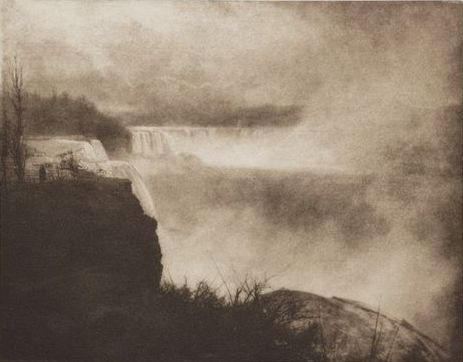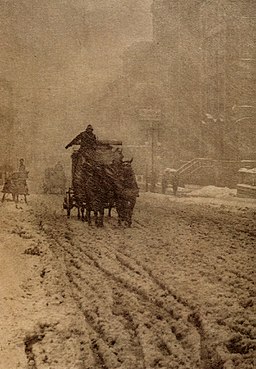Photographic art is a reflection of current cultural influences and the technology available to the photographer. Pictorialists, the forerunners of photo impressionism were strongly influenced by the impressionist painters of their day. But did the influence go both ways? Were the Impressionists inspired by photography? A recent exhibition of early photographs and impressionist paintings at the University of Michigan’s Museum of Art suggests they did.

I found the promotional material for the exhibition an interesting read. According to the UMMA’s web site:
“This exhibition advances a new argument for the origins of what was called “the new painting,” namely that a unique convergence of forces—social, artistic, technological, and commercial—along the Normandy coast of France dramatically transformed the course of photography and painting (as well as of the region itself). Within this framework, the invention of the camera and the development of early fine art photography in that particular setting will be seen as the specific catalysts that brought about a new approach to painting.”
Elsewhere the promotional material for the exhibition says:
“”After gazing at Monet’s or Courbet’s work, it’s a short step to grasp how photographers’ quest to “arrest motion” became aesthetically valid and how instantaneity captured their imagination, said McNamara.”
I am not sure that is really what was going on. These photographers were not trying to arrest motion for its own sake. Like painters of their day they fought against the tools at hand to capture the essence of a their subject; and the technology at hand was limited, cumbersome and expensive. Remember that Eastman did not introduce a practical portable camera until about 1888.

It may be true that the photography en plein air challenged painters to do the same but I don’t agree that arresting motion was a factor. For me the open question is whether the photographers of this period would have moved towards impressionistic images if they had access to better tools? Was it a coincidence that Pictorialism traces its roots to about the time of the first Kodak?
“’The Lens of Impressionism’ is clearly an exhibition that draws on history, but raises contemporary issues,” said McNamara. “With the Internet and the proliferation of images in our culture, questions arise about originality. These were the same issues facing Impressionist artists working at a time when photography was influencing how they looked at the world.”
I like the ideas being explored here and would have liked to have seen the exhibition. You can read about it at Reexamining Link between Rise of Photography and Impressionism and at http://www.umma.umich.edu/view/past/2009-lens.html. The gallery guide can be seen at http://www.umma.umich.edu/view/past/Normandy_GalleryGuide.pdf


 Niagara, a photograph of Niagara Falls (from the Canadian side) by English photographer Alfred Horsley Hinton (1863–1908).
Niagara, a photograph of Niagara Falls (from the Canadian side) by English photographer Alfred Horsley Hinton (1863–1908).







